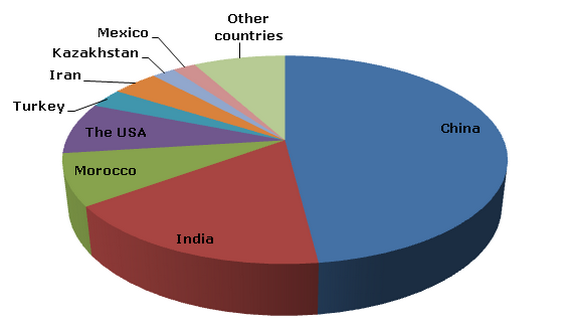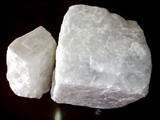Barite is a mineral that has a high specific gravity and which is widely used as a drilling fluid weighting agent in the process of oil and gas excavation. Approximately 85% of the global barite production is used in the oil and gas industry. Increasing activities in the exploration of unconventional oil and gas resources along with tremendous advances in drilling technology make up one of the major drivers for growth of the global barite consumption.
The world’s total barite reserves are around 2 billion tonnes, but only around 740 million tonnes are identified resources. China, India, Algeria, the US and Russia possess the most substantial resources. A great many barite deposits are discovered across the globe, however, some of them are uneconomic to mine as barite can be mined much more cheaply in China.
Barite: structure of world reserves, 2012

In 2012, the global barite production experienced a mild growth and touched the 8.4 million tonnes mark. APAC is the world’s leading supplier of barite, calling for almost 70% of the worldwide barite production. China alone captures around a half of the global barite production volume. MENA ranks the 2nd largest regional barite manufacturer. The world demand for barite is poised to see tremendous growth in the years to come. Novel barite mines are scheduled to start operating in such countries as the USA, Mexico, Liberia, Zimbabwe, amongst others.
Barite: world production broken down by country, 2012

The global barite production is forecast to post 0.05% annual growth through 2017 to exceed the 8.61 million tonnes mark by the end of the forecast period. China, India, Morocco and the USA are expected to maintain their leading positions in the world barite market space.
More information on the barite market can be found in the research study “Barite: 2014 Market Review and Forecast”.
